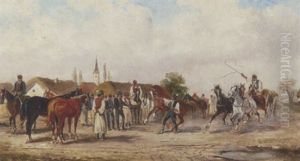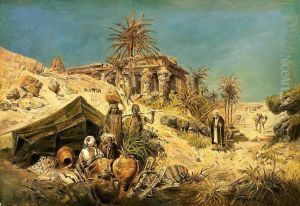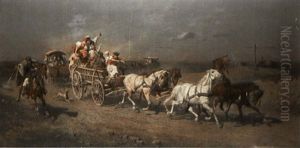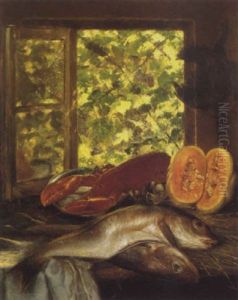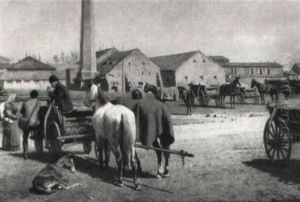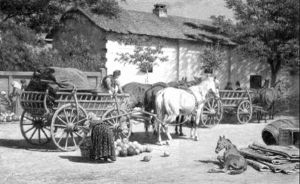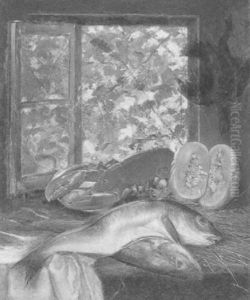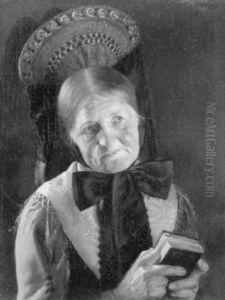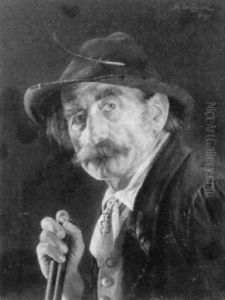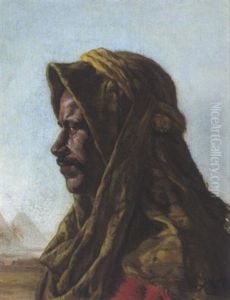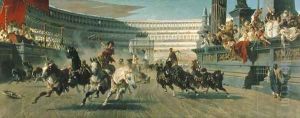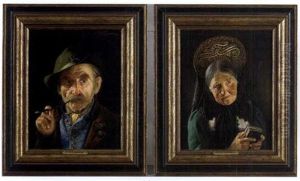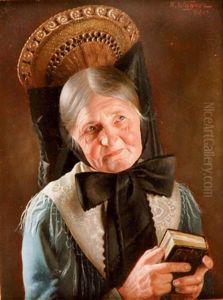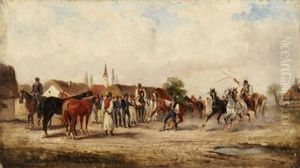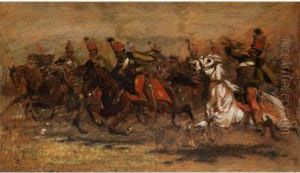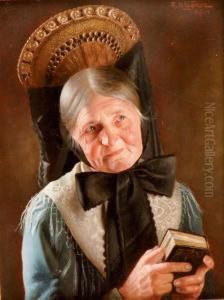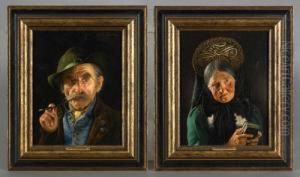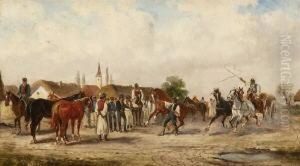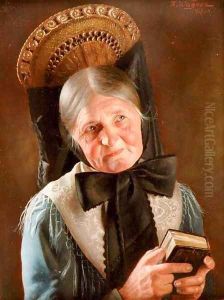Alexander von Wagner Paintings
Alexander von Wagner was a distinguished Hungarian painter, born on October 16, 1838, in Pest, which is now part of Budapest, Hungary. He was a prominent figure in the European art scene during the late 19th and early 20th centuries. Wagner's artistic journey began at the Academy of Fine Arts in Vienna, where he studied under the guidance of notable artists such as Karl von Blaas and Franz Eybl. His talent and dedication to his craft soon led him to further his studies in Munich, a city that was, at the time, a vibrant center for artistic innovation and education in Europe.
Wagner's work is often characterized by its dramatic intensity and technical precision, qualities that were highly regarded in the academic art circles of his time. He specialized in historical and mythological scenes, infusing them with a sense of dynamism and emotional depth that resonated with audiences and critics alike. One of his most famous works, 'The Chariot Race,' exemplifies his skill in capturing movement and excitement, drawing viewers into the spectacle of ancient Roman sports.
Throughout his career, Alexander von Wagner achieved considerable success and recognition. He was a member of several prestigious art institutions, including the Royal Academy of Fine Arts in Munich. His works were exhibited widely across Europe, earning him accolades and awards. Despite his acclaim, Wagner remained deeply connected to his Hungarian roots, contributing to the cultural life of his homeland through his art and influence.
After a long and fruitful career, Alexander von Wagner passed away on January 19, 1919, in Munich, Germany. His legacy continues to be celebrated for its contribution to the academic art tradition and its portrayal of historical and mythological narratives. Wagner's paintings are held in high esteem, not only for their aesthetic beauty but also for their ability to capture the imagination and evoke the grandeur of the past.
